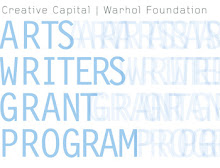
Walter Gropius from “The Theory and Organization of the Bauhaus” (1923)
…lately the artist has been misled by the fatal and arrogant fallacy, fostered by the state, that art is a profession which can be mastered by study. Schooling alone can never produce art!…Academic training, however, brought about the development of a great art-proletariat destined to social misery. For this art-proletariat, lulled into a dream of genius and enmeshed in artistic conceit, was being prepared for the ‘profession’ of architecture, painting, sculpture or graphic art, without being given the equipment of a real education….Lack of all vital connection with the life of the community led inevitably to barren esthetic speculation. The fundamental pedagogic mistake of the academy arose from its preoccupation with the idea of the individual genius and its discounting the value of commendable achievement on a less exalted level. Since the academy trained a myriad of minor talents in drawing and painting, of whom scarcely one in a thousand became a genuine architect or painter, the great mass of these individuals, fed on false hopes and trained as one-sided academicians, was condemned to a life of fruitless artistic activity. Unequipped to function successfully in the struggle for existence, they found themselves numbered among the social drones, useless, by virtue of their schooling, in the productive life of the nation.
It’s interesting to see how these words easily apply to our times as well. Eighty-five years later, we’ve gone through the industrial revolution, and the artistic revolution that was a response to it has institutionalized itself to the point that we’re back in the same old place, needing again to reassess how we approach art and aesthetics to meet a new set of requirements for a new age.


















